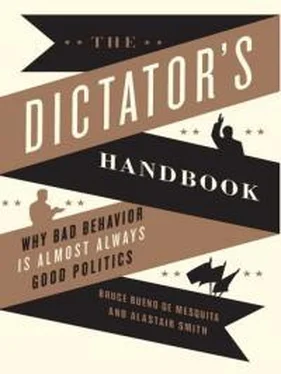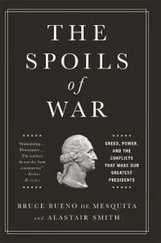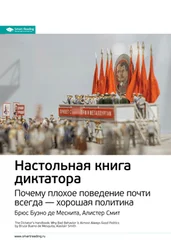The lesson here is clear. While all the states had the same nominal rules, redistricting and enfranchisement criteria matter in creating differences in the competitiveness of political systems and the development of the states. If properly attended to, districting and enfranchisement decisions could make the United States an even better place than it currently is.
Let’s start with the decennial redistricting of Congress. The Supreme Court insists on the principle of one-person, one-vote and that is an excellent guideline. But it is a principle so easily distorted as to make congressional elections almost a farce except under extreme conditions. This is true for the simple reason that it is politicians in state legislatures who get to draw up congressional district boundaries. Shockingly enough, they design the boundaries to make it easier for their party to win.
Gerrymandering is especially pernicious because it translates into two conflicting consequences. The average American is greatly dissatisfied with the job that Congress does and the average American is happy with his or her member of Congress. The latter is true because districts are constructed by politicians to give their preferred party a majority and so, by definition, the majority in any district is likely to be content. But this is a great perversion of governance. A small coalition of state legislators pick their voters instead of millions of voters picking their representatives. When politicians pick who votes for them it comes as no surprise that politicians are easily reelected and barely held accountable.
Fixing gerrymandering is something that can be done only once a decade in the United States. It can be done more frequently in many parliamentary democracies that equally suffer from this perversion of representative politics. Whether the opportunity is ongoing or infrequent, fixing gerrymandering is easy, but to be feasible the voters must take up the cause and fight for it.
Many scholars of American politics have worked out lots of better ways to allocate congressional districts than the way it is done now. All the methods come down to variations on a common theme: district boundaries should not be manipulated to squeeze some voters in here and others out there. Boundaries should reflect some basic principles of geometry and the natural constraints of the terrain, like major rivers or mountains. As a simple principle, gerrymandering could be greatly diminished by turning redistricting over to some computer programmers and mathematical political scientists, who could design rules that are not district specific but that instead apply common principles of fair representation across all districts.
A voter initiative in California has taken a step in this direction. It calls for the appointment of a nonpartisan commission to handle redistricting. We will see how well that does at being nonpartisan. A computer program drawn up in ignorance of any specific district’s distribution of political preferences would be much more likely to achieve fairness and impartiality while fulfilling the spirit as well as the letter of the Supreme Court’s insistence on one-person, one-vote.
Along with wiping out coalition-reducing gerrymanders, the time may well have come to amend the US Constitution to get rid of the electoral college. Here we have an institution whose founders’ original intent is pretty clear. They wanted to ensure that the slave states would join the United States and that meant erecting constitutional provisions that would protect slavery.4 The electoral college was one of those institutions. Here is a great example where original intent most assuredly should not guide modern-day politics. Slavery has been outlawed for about 150 years and yet the electoral college persists, and the primary reason, even if rarely spoken out loud, for its survival is that it allows politicians to construct a coalition of essential supporters that is substantially smaller than would be the case under direct election.
Today the electoral college is justified by its defenders on the principle that it protects the interests of the small states since they are overrepresented in terms of electoral college votes. Indeed, that is exactly what it does. But what happens to the idea of one-person, one-vote? Apparently a vote in Wyoming or Montana should, by this argument, count more toward choosing the president (and vice president) than a vote in California or New York. That’s a convenient argument—if you’re from Wyoming or Montana. The rules of the electoral college make it possible in a two-candidate race for one candidate to win a majority of the popular vote and the other candidate to be elected president of the United States. Indeed, judiciously placed votes in a multicandidate race, such as in the cases of John Quincy Adams and Abraham Lincoln, can allow someone to become president with a surprisingly small amount of support in the general electorate. Win the right combination of states—rather than the most voters—and you can be president. This is just another mechanism to keep the winning coalition smaller than it could be and, thereby, to empower politicians more and the people less. Just this mechanism helped distort American politics right up to—and contributed to precipitating—the Civil War and it helps today to favor candidates popular in the right places rather than across all the country.
Immigration policy is a hot topic of debate in the United States and across much of democratic Europe. The reason for the debate is pretty much the same whether it is taking place in Phoenix or Paris, Shropshire or San Francisco. Immigration policies come in three flavors. In one, immigrants have an easy time becoming citizens in their new homeland. In another, immigrants are welcomed as guest workers but cannot gain citizenship. And in the third, immigrants just aren’t welcomed. It turns out that which immigration flavor is chosen has big effects on the size of the groups that dictate whether a government, in governing for itself, also governs for the people.
Immigrants without citizenship opportunities increase the size of a country’s disenfranchised group. As such, they are, barring open rebellion (which is rare among poor immigrants), an impotent source of demand for public goods. They are not in the interchangeable selectorate and they cannot become influentials or essentials. Guest worker immigration policies put immigrants in exactly this boat. The monarchies of the Middle East love this sort of immigration because it doesn’t interfere with the control of the few over the many, and if any immigrant misbehaves he can just be deported.
We see a similar pattern of constraints that keep immigrants from having a shot at being in a winning coalition in some democracies as well. Gaining citizenship rights is extremely difficult in Japan, for instance. Although over the centuries there have been many waves of immigration to Japan (from, for instance, North Korea), the limits on access to citizenship ensures that immigrants do not compel an expansion of the winning coalition.
In places like Great Britain, immigrants from commonwealth countries like India or Pakistan can easily enter the country and gain citizenship. This means that they are quickly made part of the selectorate. Because the size of the winning coalition in democracies is tied, at least indirectly, to how many people can vote, this also means that immigration expands the coalition. Naturally many politicians will be unhappy about this as it diminishes their control over discretionary money. Current citizens may also be unhappy especially if they back the party in power. Expanding the coalition reduces the value of their private rewards. But, for farsighted members of a current winning coalition in a democracy and for the many citizens who voted for the losing party, increased immigration means increased pressure on the government to produce more public goods. That’s good for just about everyone and especially for those not in the coalition of essentials.
Читать дальше












